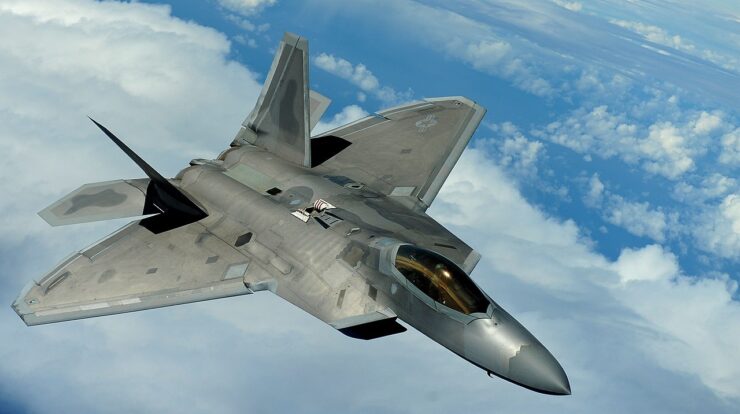
The reason for the F-22’s abrupt decline was the rise of the more prominent F-35 Lightning II fighter jet.
Over the past twenty years, the F-22 Raptor has stood as the premier air dominance aircraft globally. Additionally, it marks the debut of a functional stealth fighter jet. These distinctive traits secure its place among the pantheon of groundbreaking combat aircraft in military aviation history.
But how many F-22 Raptors does the U.S. Air Force have? And why has the Air Force been unable to order more F-22s to increase its global deterrence—at a time of record near-peer threats around the world?
The Air Force received 186 F-22 Raptors of different configurations. After 20 years of combat and high-risk training, the F-22 fleet has dwindled to approximately 100 operational aircraft. The Air Force, and rightly so, keeps the exact number classified. Around 30 aircraft of the oldest configuration serve as
training and testing jets
.
Even though both Congress and the Air Force are investing heavily in updating the operational F-22 fleet so it can remain functional until at least the 2040s, the reality is that the Raptor is headed towards obsolescence.
It cannot be denied that the Air Force had big plans for
the F-22
. As the fighter jet was taking shape and form in the late 1990s and early 2000s, the Air Force was planning for a fleet of 750 Raptors. With such a large fleet of the most capable air superiority fighter jet in the skies, the Air Force would all but have ensured victory in the skies against any conventional adversary for years to come.
Unfortunately, things did not work out as planned.
The F-22
debuted operationally in 2005, but Lockheed Martin, the manufacturer of the stealth aircraft, shut down the production line only six years later, in 2011.
The reason for the F-22’s abrupt decline was the rise of the more prominent F-35 Lightning II fighter jet. Although the F-35 is not as advanced as the F-22 in air superiority, it is superior in a variety of roles, making it more useful overall. Notably, both aircraft have stealth capabilities, but the F-35 is designed to connect and enable friendly assets on the battlefield while also being capable of several mission sets on its own.
By 2011, the F-35 program had gained significant momentum, prompting both Lockheed Martin and the Pentagon to shift their attention towards accelerating its manufacturing process.
the F-22
line was shut down—and reconfigured to facilitate America’s next stealth fighter jet.
Nevertheless, the F-22 has consistently occupied a prestigious position within America’s aerial armory. Notably,
the F-22
It remains one of the select few fighter jets that the U.S. has persistently refused to sell to other nations.
Even though long-standing American allies continue to push for acquiring the stealth fighter jet, the U.S. remains steadfast in rejecting these requests. For instance, both Japan and Israel put considerable effort into persuading Congress to authorize the international purchase of the F-22, yet they were unsuccessful. This reluctance stems from the recognition that the F-22 represents the pinnacle of air dominance capabilities and houses highly sensitive technologies. Consequently, once the F-22 retires from active duty, it may well be remembered as having exclusively flown within the ranks of the U.S. Air Force.
About the Author: Stavros Atlamazoglou
Stavros Atlamazoglou
is an experienced defense journalist with expertise in
special operations
Additionally, he is a seasoned Hellenic Army veteran who completed his national service with the 575th Marine Battalion and at Army Headquarters. He earned a Bachelor’s degree from Johns Hopkins University and went on to obtain a Master’s from the university’s School of Advanced International Studies (SAIS). His professional writings have been showcased in various publications.
Business Insider
,
Sandboxx
, and
SOFREP
.
Image: Shutterstock.






